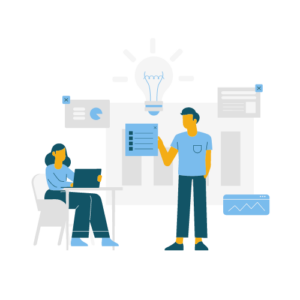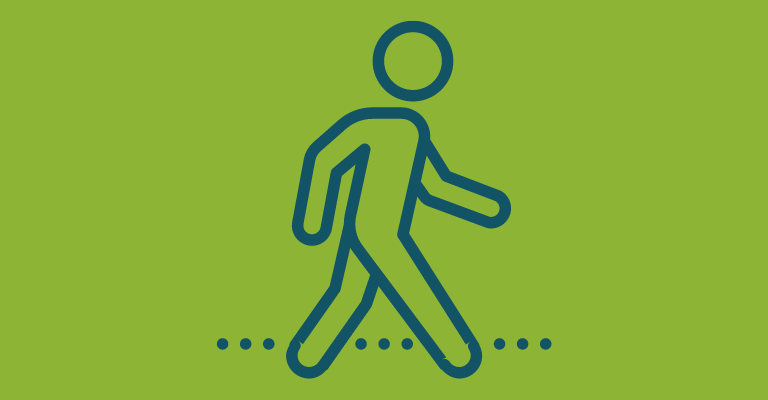Taking regular microbreaks throughout the workday can help employee productivity and resilience.
Microbreaks are short, intentional breaks that give employees a chance to rest, recharge, and refocus.
In this post, we’ll explore the benefits of microbreaks for workplace productivity and resilience, and how incorporating them into your organization’s culture can lead to improved performance and results.
So, whether you’re a CEO, manager, or team leader, read on to discover the power of microbreaks for boosting employee performance and creating a more resilient workforce.

Free Download
Download our free guide, “6 Tips to Boost Workplace Resilience” to help your employees become their most resilient selves today!
The Benefits of Microbreaks for Workplace Productivity
As a leader, you know that productivity is essential to the success of your organization.
But did you know that encouraging your employees to take regular microbreaks can actually improve their productivity?
Here are some of the benefits of microbreaks for workplace productivity:
Improved Concentration and Focus
Taking short breaks throughout the workday can help employees stay focused and engaged.
Studies have shown that after a break, employees are better able to concentrate on tasks, resulting in higher productivity levels.
By encouraging your employees to take microbreaks, you can help them maintain their concentration and focus, leading to improved performance.
Increased Creativity and Problem-Solving Abilities
Microbreaks can also help employees tap into their creativity and problem-solving abilities.
When employees step away from their work for a few minutes, they give their brains a chance to rest and recharge.
This can lead to fresh insights and ideas when they return to their work, resulting in improved creativity and problem-solving abilities.
Enhanced Job Satisfaction and Motivation
Microbreaks can also boost job satisfaction and motivation levels.
When employees feel that their wellbeing is valued and supported by their employer, they are more likely to feel satisfied with their job and motivated to perform well.
Encouraging microbreaks can send a message to your employees that their health and wellbeing are important to your organization, leading to higher levels of engagement and motivation.
By incorporating microbreaks into your organization’s culture, you can help improve workplace productivity by allowing employees to recharge and refocus.
The Benefits of Microbreaks for Workplace Resilience
Resilience is critical in the workplace, especially during challenging times.
Encouraging your employees to take regular microbreaks can help build resilience by providing opportunities to rest, recharge, and build coping skills.
Here are some of the benefits of microbreaks for workplace resilience:
Reduced Stress and Burnout
Work-related stress and burnout are common problems that can lead to decreased productivity and poor performance.
Microbreaks can help employees manage their stress levels by giving them a chance to step away from their work and relax.
Even a short break can be enough to reduce stress and help employees recharge, leading to improved resilience.
Improved Mental Health
Microbreaks can also improve employees’ mental health because they allow our minds to regenerate and relax.
Taking short breaks throughout the day can help employees manage their workload and prevent feelings of overwhelm.
Encouraging microbreaks can also help create a culture that prioritizes mental health, which can improve overall wellbeing and resilience.
Strategies for Incorporating Microbreaks into the Workday
Now that we understand the benefits of microbreaks and their connection to productivity and resilience, let’s explore some strategies for incorporating them into your organization’s culture.
Here are some tips to get started:
Lead by Example
As a leader, it’s essential to model the behavior you want to see in your employees.
Take regular microbreaks throughout the day and encourage your team to do the same.
By leading by example, you’ll demonstrate the importance of taking breaks and set a positive tone for your organization’s culture.
Create a Culture of Break-Taking
Incorporating microbreaks into your organization’s culture can help ensure that everyone is taking the breaks they need to stay productive and resilient.
Encourage your team to take breaks throughout the day and make it clear that taking breaks is a priority.
Schedule Breaks Into the Workday
Scheduling breaks into the workday can help ensure that employees are taking the breaks they need.
Encourage employees to take short breaks every hour or two, and longer breaks throughout the day, such as a lunch break.
Encourage Movement and Exercise
Taking microbreaks that involve movement and exercise can help employees recharge and improve their overall wellbeing.
Encourage your team to take short walks, stretch, or engage in other physical activity during their breaks.
Provide Relaxation Resources
Providing resources for relaxation, such as a quiet room, meditation space, or even a designated nap room, can help employees take the breaks they need to stay productive and resilient.
By incorporating these strategies into your organization’s culture, you can help ensure that your employees are taking the breaks they need to stay productive and resilient.
Remember, taking breaks is not a sign of weakness or laziness but a critical component of workplace success.
Encouraging microbreaks can help create a culture that prioritizes wellbeing and leads to a more resilient and productive workforce.
Overcoming Barriers to Microbreaks
While microbreaks can be a valuable tool for improving workplace productivity and resilience, there may be some barriers that prevent employees from taking the breaks they need.
Here are some common barriers to microbreaks and strategies for overcoming them:
Workload and Deadlines
Employees may feel like they can’t take a break because they have too much work to do or because they’re facing a tight deadline.
However, taking a break can actually help employees be more productive in the long run.
Encourage employees to prioritize their work and take short breaks throughout the day to recharge.
Workplace Culture
If your organization’s culture doesn’t prioritize breaks or encourages working long hours without breaks, it can be difficult to change employee behavior.
As a leader, it’s essential to create a culture that values wellbeing and work-life balance. Consider implementing policies that encourage breaks and lead by example.
Guilt and Perception
Some employees may feel guilty about taking breaks or worry that their colleagues or managers will perceive them as lazy or unproductive.
It’s important to create a culture that values breaks and recognizes their importance for productivity and resilience.
Encourage employees to take breaks and lead by example to help shift perceptions.
Technology and Distractions
With technology and constant connectivity, it can be challenging for employees to disconnect and take a break.
Encourage employees to disconnect from technology during breaks and create designated spaces or times for breaks to minimize distractions.

Free Download
Download our free guide, “6 Tips to Boost Workplace Resilience” to help your employees become their most resilient selves today!
Conclusion
Microbreaks may seem insignificant, but they can have a significant impact on workplace productivity and resilience.
By taking short breaks throughout the day, employees can recharge and maintain their focus, leading to improved productivity and better overall job satisfaction.
Additionally, breaks can help build resilience by reducing stress and preventing burnout.
As a leader, it’s essential to prioritize breaks and create a workplace culture that values wellbeing and work-life balance.
By encouraging and modeling the behavior of taking microbreaks, you can help create a workplace that promotes productivity and resilience, leading to better overall outcomes for your team and organization.
Incorporating microbreaks into the workday can seem like a small change, but it can have a big impact on both individual and organizational success.
So, take a break, recharge, and reap the benefits of improved productivity and resilience.



